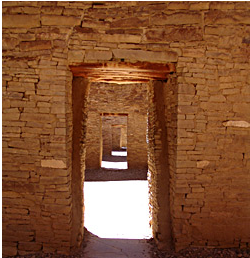Publication Date
5-1-2015
Abstract
Human population structure is influenced by cultural and biological interactions. Little is known regarding to what extent cultural interactions effect biological processes such as migration and genetic exchange among prehistoric populations. In this study, I draw upon archaeological and ethnohistoric research to investigate the interaction of biology and culture among Postclassic period (AD 900-1519) Mexican populations. The central question for this project is: how did processes of economic exchange and political expansion affect genetic exchange among Postclassic period Mexican populations? To address this question, various biological distance analyses derived from dental morphological traits were employed to investigate inter- and intra-regional population interaction. These biological distances were further compared with distances inter-regionally, based on models of cultural interaction to evaluate the effects of geographic distances, political and economic interactions, shared migration history, and shared cultural/linguistic group. Cultural effects on biological population structure were further evaluated at the regional and site level using both conventional and innovative statistical approaches. My results show that shared migration and trade are correlated with biological distances, but geographic distance is not. Trade and political interaction are also correlated with biological distance when combined in a single variable. These results indicate that trade and political relationships affected population structure among Postclassic Mexican populations. When viewed regionally, there is high similarity among groups in the Central Mexico and the Huasteca/Maya regions, and low similarity among groups in West and Northern Mexico. These results suggest high levels of gene flow among groups in these regions. Results of the analyses of individual sites indicate that important economic, political, or religious centers in Central Mexico and the Huasteca/Maya regions have high variation among individuals, but not in West and Northern Mexico. I conclude that differences in population structure exist among the regions throughout Mexico, and that population structures are affected by differences in economic, political, and/or religious structure. I further conclude that trade likely played a major role in shaping patterns of interaction between populations. This study also shows that the biological distance data support the migration histories described in ethnohistoric sources.
Keywords
Biological distance; Mexico; Postclassic period
Project Sponsors
Latin American and Iberian Institute, University of New Mexico
Document Type
Dissertation
Language
English
Degree Name
Anthropology
Level of Degree
Doctoral
Department Name
Anthropology
First Committee Member (Chair)
Heather H.J. Edgar
Second Committee Member
Osbjourn M. Pearson
Third Committee Member
Hillard S. Kaplan
Fourth Committee Member
Andrea Cucina
Fifth Committee Member
Frances Berdan
Recommended Citation
Ragsdale, Corey Steven. "Cultural Interaction and Biological Distance Among Postclassic Mexican Populations." (2015). https://digitalrepository.unm.edu/anth_etds/55

